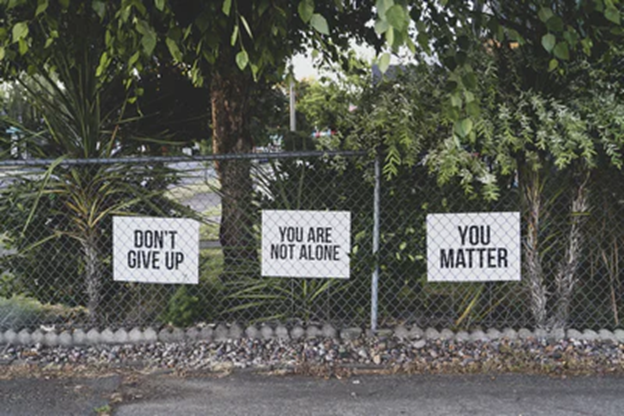How Does Court-Ordered Rehab Work and Is It Useful
Published 9:39 am Thursday, September 2, 2021
Sponsored Content
Drugs and alcohol abuse leads to many problems. Not only does it affect people’s health, but also it may lead them to commit crimes. Consuming any intoxicating substance in large quantities can impair your judgment. Many people could fall into the trap of being addicted to drugs or alcohol and, reportedly, about 80% of crimes are related to substance abuse. A significant portion of this percentage represents first-time offenders, so it suffices to say that anyone can commit a crime when under the influence.
Not all offenders are sentenced to jail time. There are other options in the justice system that give the offender a second chance. After all, jail time isn’t a guarantee that the person won’t do it again. That’s why some judges sentence the offenders to court-ordered rehab. There are a few criteria that have to apply for a person to be eligible for such a ruling. In this article, we’ll be discussing how court-ordered rehab works and whether or not it’s effective.

Image source – Unsplash.com
Defining Court-Ordered Rehab
When a person is presented to the court due to a substance abuse offense, it’s up to the judge to decide whether or not they’re qualified for court-ordered rehab. The objective is to allow the offender to redeem themselves by getting proper treatment. People working in the justice system acknowledge that not all problems can be fixed by putting people away. Most criminals who have done time in prison end up abusing drugs or alcohol right after they get out. This just puts the whole process in a loop, so whoever gets out of prison probably ends up going back in.
Court-ordered rehab is designed to break that loop. Rehab is a specified program for addicts, giving them the appropriate tools to help them recover from their addiction. It consists of an initial detox program to get addicts to withdraw drugs from their system. Then, they participate in a series of therapy sessions, including group therapy, which creates a support system and a community for them. This aspect is crucial, and it’s the main idea behind support groups like Alcoholic Anonymous and Narcotics Anonymous. What gives any person hope is knowing that other people are going through the same thing.
Eligibility for Court-Ordered Rehab
Certain criteria have to apply to a person to be eligible for court-ordered rehab. If you were arrested for an addiction-related crime, you should read more about court-ordered treatment to understand all your options. First-time offenders who committed a nonviolent crime due to drug or alcohol abuse are qualified for court-ordered rehab. Second-time offenders might still be eligible as well. The offender has to plead guilty to the crime and express their will to complete the treatment. It’s up to the judge to decide whether the person is not a threat to anyone and would benefit from the program. The person also has to be qualified for a probation period. The prosecutor must also agree to this sentence. It should be brought up in court by the defendant’s lawyer as an alternative to jail time. If the defendant’s lawyer does not bring it up, the defendant has the right to do so.
Drug Court
A drug court is another option in the justice system that is specialized in substance abuse. The upside of this particular court program is that it handles a specific portion of offenders eligible for alternative sentences like court-ordered rehab. The goal of a drug court is to sentence first- and second-time offenders to a treatment program instead of prison. The odds here are much better for the offenders as it gives them the opportunity to recover from their addiction. Compared to jail sentences, court-ordered rehab is more successful in decreasing crimes related to substance abuse.
A drug court also offers a support system to the offender to help them get through the recovery process. A team is gathered, including family members, therapy consultants, judges, and community corrections staff. The offender must attend court, undergo supervision, submit samples for drug tests, and finally graduate successfully from the program.
Payment for the Program
The payment fees for the rehab facility fall upon the offender. The court allows the offender to choose the facility. The cost of a treatment program depends on the length of treatment specified by the judge, ranging from one month to a year. Payment might be an issue for an addict, as they usually exhaust their finances due to substance abuse. However, numerous options can help them pay for rehab.
The person should first set a budget and then search for facilities within their price range. Some facilities forfeit a portion of the bill or offer loans or payments in installments. Insurance companies are also an option since many of them cover treatment programs in their policy. The offender needs to check which rehab facility accepts their insurance plan.
The Effectiveness of the Program
The most important factor for a successful program is the person’s desire to recover. The program gives hope to addicts to lead better lives. It gives them a second chance instead of being sentenced to jail time. The program mandates regular and random checkups, which are very effective in making people comply. They know that they have to stay off drugs or alcohol for a long time; otherwise, they face the maximum penalty for their crime. Supervision makes addicts abide by the rules of their sentence, which achieves the purpose of court-ordered rehab.

Image source – Unsplash.com
It is never easy to have to come to terms with addiction and also to work through it successfully. This is why rehab owners work so hard to come up with a number of solutions for treatment. This treatment program allows addicts to have a support system that they can turn to whenever they feel tempted to consume drugs or alcohol again. A person could decide each day to get better and actively participate in the set program. Rehab facilities offer a variety of therapy programs that are tailored to each person’s needs. If you’re an addict, you should remember that it’s an ongoing process. Treatment doesn’t end with court-ordered rehab. You need to use everything you learned in rehab and apply it in your life every day.

